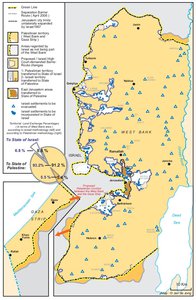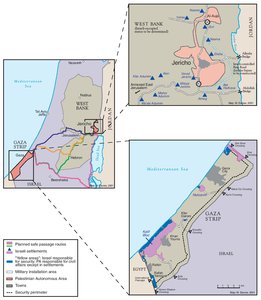GAZA-JERICHO (OSLO I) AGREEMENT, CAIRO, 4 MAY 1994
Map Details
The PLO’s recognition of Israel and acceptance of UNSC Resolution 242 at the 19th PNC in Algiers (12-15 November 1988) saw it relinquish claims to 78% of historic Palestine (pre-1967 Israel). By late 1992, one year on from the Madrid conference, lack of progress in bilateral talks was fuelling doubts about the wisdom of this huge concession and stood to undermine PLO credibility. With the initial and official Washington negotiation track (operating since Madrid) locked in disagreement and the new Clinton administration taking a pro-Israel position, the talks begun at Madrid entered 1993 with little sign of hope. Secret informal talks begun in Oslo in January 1993 between Israeli academics and the PLO, represented by Ahmed Qreia (Abu ‘Ala), Hassan Asfour and Maher Al-Kurd were, meanwhile, making more progress. In the face of the stalled official track, Israeli Prime Minister Rabin formalized the secret Oslo channel in May 1993. Both teams attempted to ‘improve’ upon the 1979 Camp David autonomy framework in accordance with their own appraisal of that plan. What emerged, after six months of wrangling, was an exchange of letters of mutual recognition between PLO head Arafat and Israeli Prime Minister Rabin and the subsequent signing of the Declaration of Principles on Interim Self-Government Arrangements (DoP) in September 1993. Despite the enthusiasm behind the perceived breakthrough, which culminated in the White House handshake between Arafat and Rabin on 13 September 1993, the DoP was an ambiguous document. Steering clear of the essential and difficult core issues (settlements, refugees, Jerusalem, borders and natural resources), the agreement paid near exclusive attention to Israeli ‘security’ demands and proposed economic ‘cooperation.’ Nonetheless, the DoP stipulated a five-year interim timetable leading to a final status and termination of the conflict. The nature of this final status was unspecified though, and made no explicit mention of Palestinian independent statehood. Implementation of the DoP was negotiated in an entirely different atmosphere to that of the Oslo talks. Israel replaced most of its Foreign Minister officials with a team of military strategists and proceeded to whittle away at the initial withdrawals discussed in Oslo. The ‘Gaza-First’ concept - which predated Oslo - had been expanded at PLO insistence to afford the Palestinians a ‘foothold’ in the West Bank and so became the ‘Gaza-Jericho’ plan. But Oslo’s vagueness left the Israelis ample room to impose limitations on even this, while the PLO’s need to detract from criticism of the DoP by manifesting a presence on ‘liberated’ Palestinian soil left them all but powerless to object. Meanwhile, the co-sponsors of the DoP were notably silent and refrained from high-profile engagement during the crucial first stages of the peace process, leaving Israel a free hand. On 4 May 1994, in Cairo, Rabin and Arafat signed the Gaza-Jericho (or Oslo I) Accord. On 12 May, the first Palestinian police crossed the Jordan to take up posts in Jericho. On 1 July 1994, amidst enormous celebrations across the OPT, Arafat returned to Palestine after almost 30 years in exile, arriving in Gaza to head the new Palestinian Authority (PA). As a first stage, the Gaza-Jericho deal offered little promise of eventual statehood and drew criticism from across the Palestinian political spectrum. The Israelis had severely limited their withdrawal from Gaza, retaining all settlements, connecting roads and a broad ‘security’ strip while redeploying from the populated areas. In all, the ‘withdrawal’ from Gaza saw the Israelis retain and, by virtue of the accord, partially legitimize their presence in some 40% of the strip. At Jericho, Israel began work on a bypass road to link the surrounding settlements into a retaining perimeter ensuring the small pocket under PA control would remain isolated from other Palestinian sites and with no access to the border crossing with Jordan. The two redeployments placed the Palestinians in control of desperately underdeveloped populated areas while denying them access to essential resources or any jurisdiction over integral outlying territories. A provision in the agreement for so-called “safe passage” between Gaza and the West Bank was not implemented. Human rights groups and democracy activists were disturbed by concessions the PLO had made in the name of Israeli ‘security,’ detecting the makings of an authoritarian regime. Indeed, the accord included a provision whereby all but 70 of the 1,000 Israeli military orders issued in Gaza since 1967 were to remain in place during the transitional phase. Powers pertaining to water, land use, zoning and development remained subject to Israeli veto, and economic integration leaned heavily in Israel’s favor. But while the controversial agreement came under intense criticism - in Israel as well - Oslo I finally released over a million Palestinians from the immediate ordeal of Israeli occupation after 27 years.
Related Maps
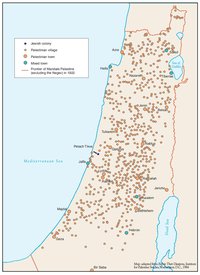
OTTOMAN PALESTINE, 1878
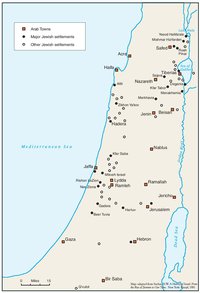
ARAB TOWNS AND JEWISH SETTLEMENTS IN PALESTINE, 1881-1914
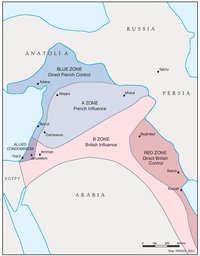
THE SYKES-PICOT AGREEMENT, 1916
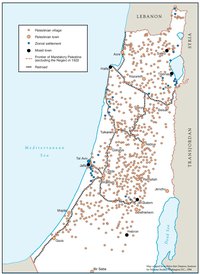
THE BEGINNING OF THE BRITISH MANDATE, 1920
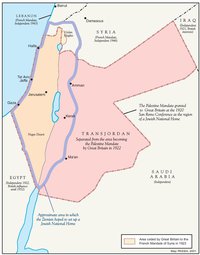
PALESTINE UNDER THE BRITISH MANDATE
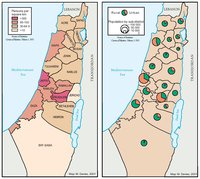
THE DEMOGRAPHY OF PALESTINE, 1931
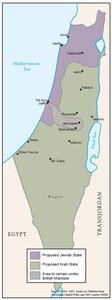
THE PEEL COMMISSION PARTITION PROPOSAL, 1937
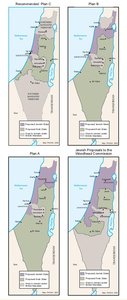
THE WOODHEAD COMMISSION PARTITION PROPOSALS, 1938
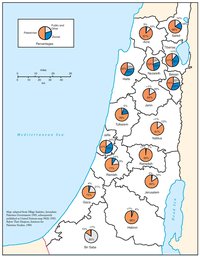
PALESTINIAN AND ZIONIST LANDOWNERSHIP BY SUB-DISTRICT, 1945
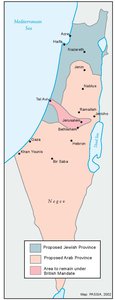
THE MORRISON-GRADY PARTITIONED TRUSTEESHIP PLAN, 1946
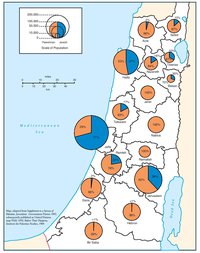
POPULATION OF PALESTINE BY SUB-DISTRICT, 1946
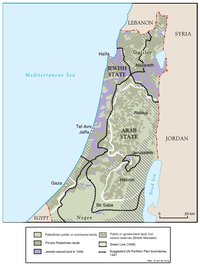
LAND OWNERSHIP IN PALESTINE, 1948
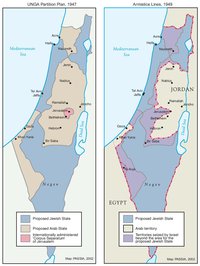
THE UNGA PARTITION PLAN, 1947 – THE 1948 WAR & THE 1949 ARMISTICE LINES
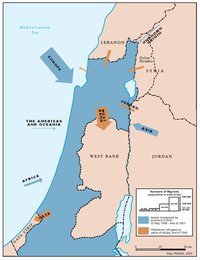
POPULATION MOVEMENTS, 1948-1951
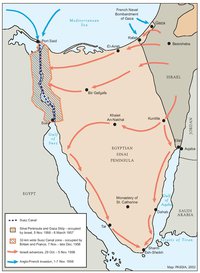
THE SUEZ WAR, 1956
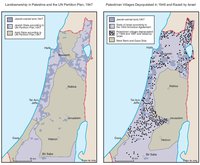
LAND OWNERSHIP IN PALESTINE AND THE UN PARTITION PLAN - PALESTINIAN DEPOPULATED AND DESTROYED VILLAGES, 1948-1949
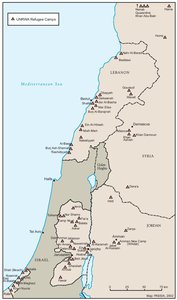
THE PALESTINIAN DIASPORA, 1958
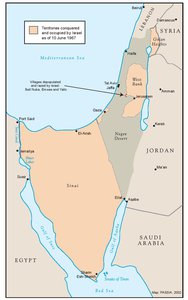
THE NEAR EAST AFTER THE JUNE 1967 WAR
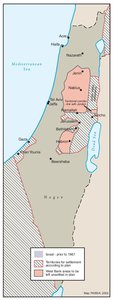
THE ALLON PLAN, JUNE 1967
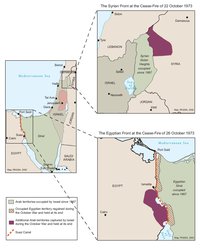
THE OCTOBER WAR, 1973
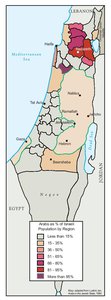
THE PALESTINIANS INSIDE ISRAEL, 1977
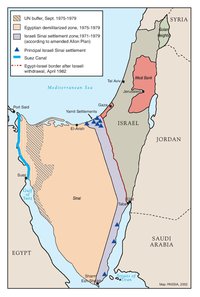
THE CAMP DAVID ACCORDS, 1978-1979
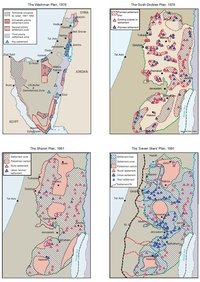
ISRAELI SETTLEMENT MASTER PLANS, 1976-1991
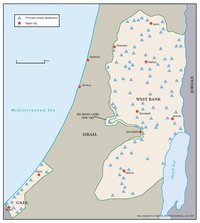
THE 1991 MADRID PEACE CONFERENCE & ISRAELI SETTLEMENTS
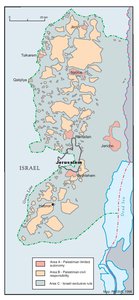
INTERIM (OSLO II) AGREEMENT, TABA, 28 SEPTEMBER 1995
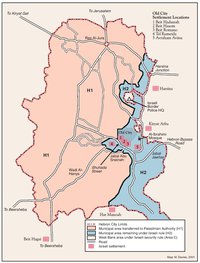
HEBRON PROTOCOL, 15 JANUARY 1997
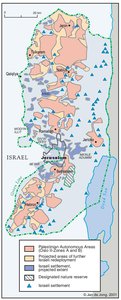
WYE RIVER MEMORANDUM, 23 OCTOBER 1998
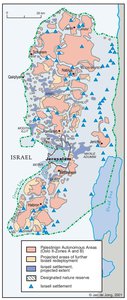
SHARM ESH-SHEIKH AGREEMENT, 4 SEPTEMBER 1999
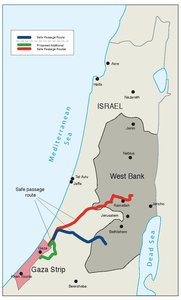
PROTOCOL CONCERNING SAFE PASSAGE BETWEEN THE WEST BANK AND THE GAZA STRIP, 5 OCTOBER 1999
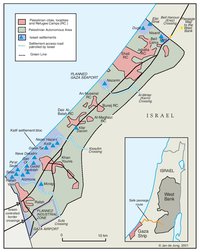
GAZA, 2000
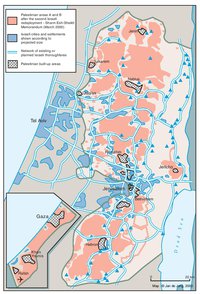
WEST BANK AND GAZA STRIP, MARCH 2000
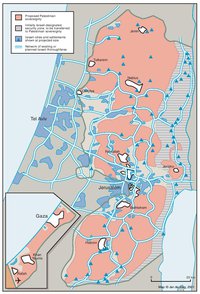
CAMP DAVID PROJECTION, JULY 2000
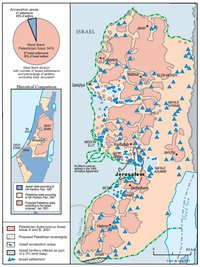
TABA TALKS PROJECTION, JANUARY 2001
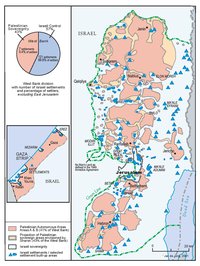
THE SHARON PROPOSAL, SPRING 2001
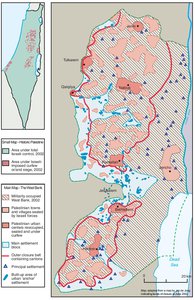
THE REINVASION OF THE PALESTINIAN TERRITORIES, 2001-2002
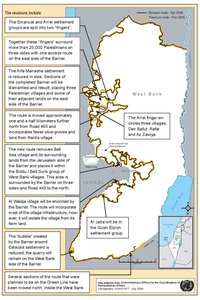
THE ROAD MAP, 2003
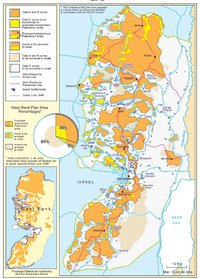
THE GENEVA INITIATIVE AND ACCORD, 2003
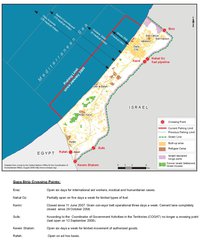
THE ISRAELI DISENGAGEMENT PLAN, 2003-2005
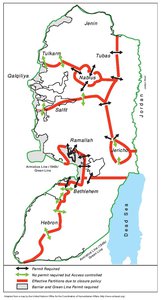
AGREED DOCUMENTS ON MOVEMENT AND ACCESS FROM AND TO GAZA, 2005
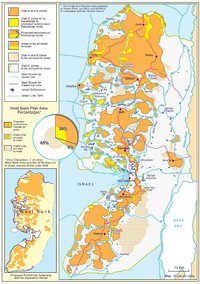
THE SETTLERS' PLAN FOR PALESTINIAN AUTONOMY, 2006
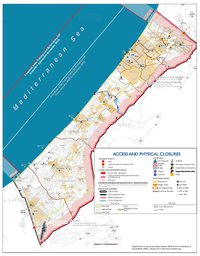
THE GAZA STRIP TODAY (2014)
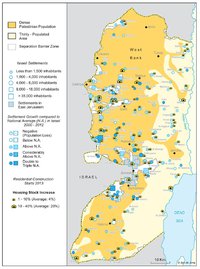
THE WEST BANK TODAY (2014)
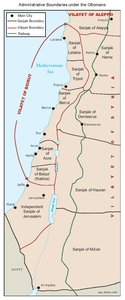
ADMINISTRATIVE BOUNDARIES

HEBRON
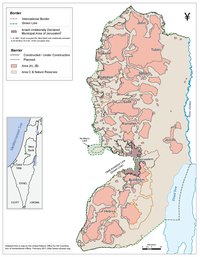
Area C
